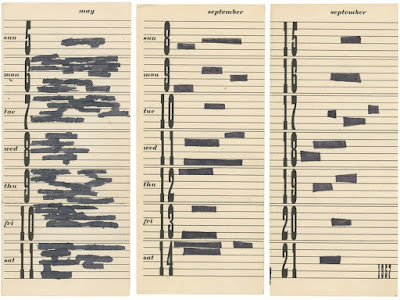Extract
from Reina Sofía Museum brochure of the exhibition:
Emotional
Architecture: The Work as Strategy Mathias Goeritz (Danzig, now
Gdansk, 1915) was educated in the turbulent Berlin of the
inter-war period, in the midst of the rise of National
Socialism. During the Second World War and the subsequent Cold
War, Goeritz forged himself a multiple personality. He was first
a philosopher and historian and afterwards a painter, a
development which coincided with his period at the German
Consulate in the Spanish protectorate of Morocco. From 1945 to
1948, Goeritz was feverishly active in Spain as a cultural
promoter, and in 1949 he moved to Mexico, where he intensified
his dual activity as an artist and agitator. It was there that
he condensed his aesthetic principles under the notion of
emotional architecture, which he was to apply not only to the
construction of buildings but also to painting, sculpture, graphics
and visual poetry. At a moment when figurative art and propaganda
dominated the art scene in Mexico, emotional architecture became
a device for confrontation, yet was well received by the politically
more conservative architectural profession. The increased number
of construction projects at that time meant that the potential for
commissions was very great. The work manifesto of emotional
architecture is the El Eco Experimental Museum which defines his
later production. Here Goeritz gathers various media (painting,
sculpture, furniture design and architecture) and works by
artists like Germán Cueto, Henry Moore and Carlos Mérida, his
own contributions being a monumental visual poem and the
formidable transposable sculpture of a twisted geometric snake,
transforming the open courtyard into a performance environment.
In
Torres de Ciudad Satélite (Towers of Satellite City), the
artist tests the limits of scale, artwork-viewer proximity, and
even modes of viewing. Five reinforced cement prisms of colossal
size foster the affective mobilization of the viewer and the
aestheticization of the effect, turning the work into a national
emblem of modernity. From then on, the use of a monumental scale
and the synthetic language of geometries, associated with the
idea of progress, identified Goeritz’s work as strategist and
agitator. A constructor of spatialities where new relations and
senses could be established, his art of mediations shakes the
institutions that validate art, such as the museum and criticism
(El Eco), artistic groups and the gallery (the group of Los
Hartos), and history and believe systems (the snake and the
pyramid or the cross and the star of David). Approaching his
oeuvre obliges us to engage with a work implicated with
cultural agency. The interest aroused today by the aspects of
circulation and reception in relational, contextual and
participative art contrasts with the development of that
creative modality of artistic mediation, that aesthetic of
commotion with which Goeritz experimented until his death in
1990.
